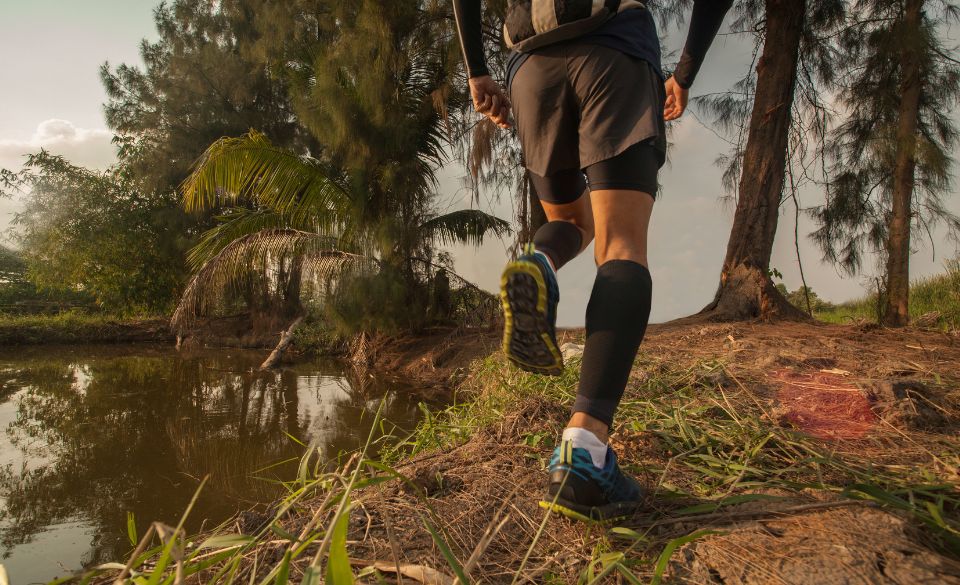
How Do You Transition To Trail Running?
Trail running is a great way to experience the beauty of nature while getting a challenging workout. However, transitioning from road running to trail running can be a bit of a challenge. Here are some tips to help you make the transition:
Start Slow: Trail running is different from road running and it’s important to start slow. Begin by running on easy, well-maintained trails and gradually work your way up to more challenging terrain.
Invest in Trail Running Shoes: Trail running shoes are designed specifically for off-road running and provide better traction, support, and stability on uneven terrain. It’s important to invest in a good pair of shoes that will protect your feet and help you to run more comfortably on the trails.
Learn How to Navigate: Trail running can be more challenging than road running because the terrain is not as predictable. It’s important to learn how to navigate and stay on the trail. This includes learning how to read a map, use a compass, and follow trail markers.
Focus on Form: Trail running requires a different form than road running. The terrain is uneven and it’s important to focus on good form to avoid injuries. This includes shortening your stride, landing on the midfoot, and keeping your upper body relaxed.
Be Prepared for the Elements: Trail running can be more challenging than road running because the terrain is not as predictable. It’s important to be prepared for the elements such as sun, rain, and cold weather. This includes bringing appropriate clothing and gear, and also carrying enough water and food.
Listen to your body: Trail running can be more demanding on your body, so it’s important to listen to your body and take it slow. If you feel pain or discomfort, slow down and take a break.
Join a Trail Running Group: Joining a trail running group can be a great way to learn more about trail running, meet other trail runners, and have someone to run with. Many running stores and local running clubs organize trail running groups.
Gradually increase the distance and difficulty: As you get comfortable with trail running and your body adapts to the new terrain, gradually increase the distance and difficulty of your runs.
Remember that transitioning to trail running takes time and patience. It’s important to start slow and gradually increase the difficulty of your runs. With the right approach and mindset, you’ll be able to safely and comfortably enjoy the beauty and challenge of trail running.
Equipment Needed For Trail Running
Trail running is a great way to explore the outdoors and get a challenging workout, but it’s important to have the right equipment to ensure a safe and comfortable experience. Here are some of the essential pieces of equipment needed for trail running:
Trail Running Shoes: Trail running shoes are designed specifically for off-road running and provide better traction, support, and stability on uneven terrain. They usually have a more aggressive outsole and a more durable upper compared to road-running shoes.
Hydration System: Trail running often takes place in remote areas where water is not readily available, so it’s important to carry a hydration system such as a hydration pack or handheld water bottle.
Headlamp or flashlight: Trail running often takes place in the morning or evening when it’s dark, so it’s important to have a headlamp or flashlight to help you see the trail and avoid obstacles.
First Aid Kit: Trail running can be unpredictable and it’s important to be prepared for any injuries or emergencies that may occur. A small first aid kit should include essentials such as band-aids, blister dressings, pain relievers, and a whistle.
Maps and Compass: Trail running can take you through remote areas and it’s important to have a map and compass to help you navigate and stay on the trail. It’s also recommended to learn how to use them before going out on the trail.
Emergency Shelter: Trail running can take you through remote areas, so it’s important to have a shelter option in case of emergency.
Clothing: The right clothing can make all the difference when it comes to trail running. Breathable and moisture-wicking fabrics are essential for keeping you cool and dry on the trails. Avoid cotton as it absorbs moisture and can cause chafing. It’s also important to layer your clothing so that you can easily adjust to changing weather conditions.
Weather-Specific Gear: Depending on the weather conditions, it may be necessary to bring additional gear such as a rain jacket, thermal layers, gloves and a beanie.
Personal Protection: To protect yourself from the sun, it’s important to bring sunscreen and sunglasses. Additionally, it’s recommended to bring a hat or a visor to protect your head and face from the sun.
Insect Repellent: Mosquitoes and other insects can be a nuisance while trail running, so it’s important to bring insect repellent to keep them at bay.
Bear Spray: If you’re running in bear country, it’s important to bring bear spray as a precautionary measure.
In summary, trail running requires specific equipment and gear to ensure a safe and comfortable experience. It’s important to invest in good quality trail running shoes, a hydration system, a headlamp or flashlight, a first aid kit, maps and compass, and weather-specific gear. Additionally, it’s important to be prepared for the elements, and to bring personal protection and insect
repellent. In certain areas, it may also be necessary to bring emergency shelter and bear spray as a precautionary measure. Overall, being properly equipped and prepared will allow you to fully enjoy the trail running experience and stay safe in the great outdoors.

